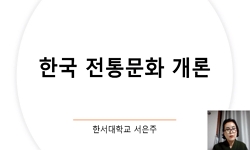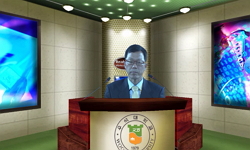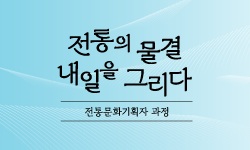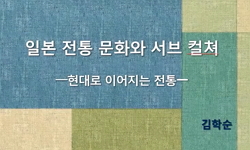Traditional cultural industries are gaining attention as a new growth engine for nations, with countries like Japan, the United Kingdom, and France actively fostering them. While South Korea has also established various policies to promote traditional...
http://chineseinput.net/에서 pinyin(병음)방식으로 중국어를 변환할 수 있습니다.
변환된 중국어를 복사하여 사용하시면 됩니다.
- 中文 을 입력하시려면 zhongwen을 입력하시고 space를누르시면됩니다.
- 北京 을 입력하시려면 beijing을 입력하시고 space를 누르시면 됩니다.
소비자의 체험활동이 전통문화에 대한 태도 및 구매 의도에 미치는 영향 = The Impact of Consumer Experience Activity on Attitude and Purchase Intention towards Traditional Culture
한글로보기https://www.riss.kr/link?id=T17055130
- 저자
-
발행사항
부여 : 한국전통문화대학교 일반대학원, 2024
-
학위논문사항
학위논문(석사) -- 한국전통문화대학교 일반대학원 , 문화유산융합학과 국가유산관리학 , 2024. 8
-
발행연도
2024
-
작성언어
한국어
- 주제어
-
발행국(도시)
충청남도
-
형태사항
; 26 cm
-
일반주기명
지도교수: 정상철
-
UCI식별코드
I804:44031-200000814913
- 소장기관
-
0
상세조회 -
0
다운로드
부가정보
다국어 초록 (Multilingual Abstract)
This study, as a foundational research on this topic, focused on the experiential aspects where differences were observed. In particular, it aimed to examine the relationship between traditional cultural experiences and their impact on consumer attitudes and purchase intentions. Through literature review, the concept of traditional culture was explored, and the theoretical content of experience, brand attitude, and purchase intention, which are the core elements of this study, was examined. Additionally, by comparing and analyzing the actual industry situation and the results of consumer perception surveys, challenges faced by the traditional culture industry were identified.
Based on theoretical considerations, we defined operational variables and established a research model. Research hypotheses were formulated through a review of previous studies, and a questionnaire was developed using a 5-point Likert scale. The survey targeted individuals who experienced traditional culture at the Seoul Intangible Cultural Heritage Center. Out of 112 responses, 107 were used after excluding 5 insincere responses.
The collected data were analyzed using SPSS and AMOS, including elementary statistic analysis, exploratory factor analysis, confirmatory factor analysis, and structural equation modeling analysis. The violation estimate test of the data showed no notable outliers. Analysis results showed that the absolute indices of fit RMSEA was 0.032, and the incremental fit indices CFI and TLI were 0.985 and 0.983 respectively, all meeting the required criteria. The correlation coefficient was 0.524, confirming discriminant validity when compared to AVE values. Standardized regression coefficients exceeded 0.7, the benchmark for exploratory research, confirming the reliability of individual measurement variables. Confirmatory factor analysis showed CR values above 0.7 and AVE values above 0.5, meeting the criteria for concept reliability and convergent validity of latent variables. The structural equation modeling analysis revealed correlation coefficients above 0.5, passing the exploratory research criteria. Hypothesis testing showed that the escapist, aesthetic, and entertainment elements of traditional cultural experiences significantly influenced consumers' brand attitudes toward traditional culture, and these attitudes, in turn, significantly impacted purchase intentions for traditional cultural products at the p<0.001 level.
This study is significant in that it empirically explored the value of experiential activities as an important element in industrial policy. The research results highlight the need for diverse policy formulations that leverage the strengths of traditional culture. As an exploratory study, it has limitations in terms of sample size, geographic area, location, and the range of disciplines covered. These factors may lead to differences in results and interpretations if there are changes in the population size or research environment. These aspects can be addressed in future research. It is expected that more academically and practically advanced research results can be obtained if a more comprehensive approach is attempted through modification and supplementation in subsequent studies.
Traditional cultural industries are gaining attention as a new growth engine for nations, with countries like Japan, the United Kingdom, and France actively fostering them. While South Korea has also established various policies to promote traditional cultural industries, the sector has not yet achieved sufficient growth and remains small-scale. The root cause of this issue can be examined through the results of a survey on the state of traditional cultural industries. The survey revealed a gap between the perspectives of industry professionals and consumer demands. To bridge this gap, it is necessary to adjust policy directions based on the survey results.
This study, as a foundational research on this topic, focused on the experiential aspects where differences were observed. In particular, it aimed to examine the relationship between traditional cultural experiences and their impact on consumer attitudes and purchase intentions. Through literature review, the concept of traditional culture was explored, and the theoretical content of experience, brand attitude, and purchase intention, which are the core elements of this study, was examined. Additionally, by comparing and analyzing the actual industry situation and the results of consumer perception surveys, challenges faced by the traditional culture industry were identified.
Based on theoretical considerations, we defined operational variables and established a research model. Research hypotheses were formulated through a review of previous studies, and a questionnaire was developed using a 5-point Likert scale. The survey targeted individuals who experienced traditional culture at the Seoul Intangible Cultural Heritage Center. Out of 112 responses, 107 were used after excluding 5 insincere responses.
The collected data were analyzed using SPSS and AMOS, including elementary statistic analysis, exploratory factor analysis, confirmatory factor analysis, and structural equation modeling analysis. The violation estimate test of the data showed no notable outliers. Analysis results showed that the absolute indices of fit RMSEA was 0.032, and the incremental fit indices CFI and TLI were 0.985 and 0.983 respectively, all meeting the required criteria. The correlation coefficient was 0.524, confirming discriminant validity when compared to AVE values. Standardized regression coefficients exceeded 0.7, the benchmark for exploratory research, confirming the reliability of individual measurement variables. Confirmatory factor analysis showed CR values above 0.7 and AVE values above 0.5, meeting the criteria for concept reliability and convergent validity of latent variables. The structural equation modeling analysis revealed correlation coefficients above 0.5, passing the exploratory research criteria. Hypothesis testing showed that the escapist, aesthetic, and entertainment elements of traditional cultural experiences significantly influenced consumers' brand attitudes toward traditional culture, and these attitudes, in turn, significantly impacted purchase intentions for traditional cultural products at the p<0.001 level.
This study is significant in that it empirically explored the value of experiential activities as an important element in industrial policy. The research results highlight the need for diverse policy formulations that leverage the strengths of traditional culture. As an exploratory study, it has limitations in terms of sample size, geographic area, location, and the range of disciplines covered. These factors may lead to differences in results and interpretations if there are changes in the population size or research environment. These aspects can be addressed in future research. It is expected that more academically and practically advanced research results can be obtained if a more comprehensive approach is attempted through modification and supplementation in subsequent studies.
국문 초록 (Abstract)
이러한 차이를 좁히 기 위해서는 조사 결과를 바탕으로, 정책 방향성을 수정할 필요가 있다. 본 연구는 이 주제에 대한 기초 연구로서, 차이가 나타난 체험 부분에 초점을 두었다. 특히 전통문화체험이 소비자의 태도와 구매 의도에 어떤 영향을 미치는지 그 관계를 살펴보고자 했다. 문헌 연구를 통해 전통문화 의 개념을 탐색하고, 본 연구의 핵심 요소인 체험, 브랜드 태도, 구매 의 도의 이론적 내용을 고찰했다. 또한, 실제 산업 현황과 소비자 인식조사 의 결과를 비교 분석하여 전통문화산업이 직면한 과제들을 도출하였다. 이론적 고찰의 내용을 바탕으로 변수 간의 조작적 정의를 내리고 연구 모형 설정하였다. 선행 연구 검토를 통해 연구가설을 세우고 Likert 5점 척도를 사용하여 설문지를 구성하였다.
설문은 서울시 종로구에 위치한 서울무형유산교육전시장에서 전통문화를 체험한 인원을 대상으로 하였으 며, 총 112부 중 불성실 응답 5부를 제외한 107부를 사용하였다. 수집된 자료는 SPSS와 AMOS를 활용하여 기초통계량 분석, 탐색적 요 인분석, 확인적 요인분석, 구조모형 분석을 진행하였다. 자료의 위반추정 치 검사 결과 특이점은 보이지 않았다. 분석 결과, 절대적합지수 RMSEA= 0.032, 증분적합지수 CFI=0.985, TLI=0.983으로 모두 기준을 충족하였다. 결정계수의 값은 0.524로 AVE 값과 비교하여 판별 타당성을 확보하였다. 표준화회귀계수는 탐색적 연구의 기준인 0.7 이상으로 개별 측정변수의 신뢰도를 확인하였다. 확인적 요인분석 결과 CR 값이 0.7 이상, AVE 값 이 0.5 이상이므로 개념 신뢰도와 잠재변수들의 집중 타당도의 기준을 충 족하였다. 구조 모형 분석 결과, 변수 간 상관계수가 모두 0.5 이상으로 나타나 탐색적 연구의 기준을 충족하였다. 가설검정 결과 전통문화체험의 일탈적, 심미적, 오락적 요소는 전통문화에 대한 소비자의 브랜드 태도에, 전통문화에 대한 소비자의 브랜드 태도는 전통문화 상품에 대한 구매 의 도에 p<0.001 수준에서 유의미한 영향을 주었다.
본 연구는 체험활동이 산업정책의 중요한 요소로서 가치가 있음을 실증적으로 탐색했다는 점에서 의미가 있다. 연구 결과를 통해 전통문화의 강점 활용한 다채로운 정책적 수립에 필요성을 제기하였다. 탐색적 성격의 본 연구는 표본의 수, 지역, 장소, 그리고 다룬 종목의 범위가 제한적이라 는 한계점이 있다. 이로 인해 더 많은 수의 표본을 수집하거나 연구 환경 에 변화가 있는 경우 결과와 해석에 차이가 있을 수 있다. 이러한 점들은 후속 연구에서 보완될 수 있는 부분으로 수정 및 보완을 통해 더욱 포괄 적인 접근을 시도한다면, 학문적, 실무적으로 더욱 발전된 연구 결과를 얻을 수 있을 것으로 기대된다.
전통문화산업이 국가의 새로운 성장동력으로 주목받으며, 일본, 영국, 프랑스 등 해외에서 활발하게 육성되고 있다. 우리나라도 전통문화산업 육성을 위해 다양한 정책을 수립해왔지만, 현...
전통문화산업이 국가의 새로운 성장동력으로 주목받으며, 일본, 영국, 프랑스 등 해외에서 활발하게 육성되고 있다. 우리나라도 전통문화산업 육성을 위해 다양한 정책을 수립해왔지만, 현재 산업은 충분한 성장 궤도 에 오르지 못했으며, 영세하다. 이 문제의 근본적인 원인은 전통문화산업 실태조사 결과를 통해 살펴볼 수 있다. 조사 결과, 전통문화산업에 대한 종사자의 관점과 소비자의 욕구 간의 차이가 있었다.
이러한 차이를 좁히 기 위해서는 조사 결과를 바탕으로, 정책 방향성을 수정할 필요가 있다. 본 연구는 이 주제에 대한 기초 연구로서, 차이가 나타난 체험 부분에 초점을 두었다. 특히 전통문화체험이 소비자의 태도와 구매 의도에 어떤 영향을 미치는지 그 관계를 살펴보고자 했다. 문헌 연구를 통해 전통문화 의 개념을 탐색하고, 본 연구의 핵심 요소인 체험, 브랜드 태도, 구매 의 도의 이론적 내용을 고찰했다. 또한, 실제 산업 현황과 소비자 인식조사 의 결과를 비교 분석하여 전통문화산업이 직면한 과제들을 도출하였다. 이론적 고찰의 내용을 바탕으로 변수 간의 조작적 정의를 내리고 연구 모형 설정하였다. 선행 연구 검토를 통해 연구가설을 세우고 Likert 5점 척도를 사용하여 설문지를 구성하였다.
설문은 서울시 종로구에 위치한 서울무형유산교육전시장에서 전통문화를 체험한 인원을 대상으로 하였으 며, 총 112부 중 불성실 응답 5부를 제외한 107부를 사용하였다. 수집된 자료는 SPSS와 AMOS를 활용하여 기초통계량 분석, 탐색적 요 인분석, 확인적 요인분석, 구조모형 분석을 진행하였다. 자료의 위반추정 치 검사 결과 특이점은 보이지 않았다. 분석 결과, 절대적합지수 RMSEA= 0.032, 증분적합지수 CFI=0.985, TLI=0.983으로 모두 기준을 충족하였다. 결정계수의 값은 0.524로 AVE 값과 비교하여 판별 타당성을 확보하였다. 표준화회귀계수는 탐색적 연구의 기준인 0.7 이상으로 개별 측정변수의 신뢰도를 확인하였다. 확인적 요인분석 결과 CR 값이 0.7 이상, AVE 값 이 0.5 이상이므로 개념 신뢰도와 잠재변수들의 집중 타당도의 기준을 충 족하였다. 구조 모형 분석 결과, 변수 간 상관계수가 모두 0.5 이상으로 나타나 탐색적 연구의 기준을 충족하였다. 가설검정 결과 전통문화체험의 일탈적, 심미적, 오락적 요소는 전통문화에 대한 소비자의 브랜드 태도에, 전통문화에 대한 소비자의 브랜드 태도는 전통문화 상품에 대한 구매 의 도에 p<0.001 수준에서 유의미한 영향을 주었다.
본 연구는 체험활동이 산업정책의 중요한 요소로서 가치가 있음을 실증적으로 탐색했다는 점에서 의미가 있다. 연구 결과를 통해 전통문화의 강점 활용한 다채로운 정책적 수립에 필요성을 제기하였다. 탐색적 성격의 본 연구는 표본의 수, 지역, 장소, 그리고 다룬 종목의 범위가 제한적이라 는 한계점이 있다. 이로 인해 더 많은 수의 표본을 수집하거나 연구 환경 에 변화가 있는 경우 결과와 해석에 차이가 있을 수 있다. 이러한 점들은 후속 연구에서 보완될 수 있는 부분으로 수정 및 보완을 통해 더욱 포괄 적인 접근을 시도한다면, 학문적, 실무적으로 더욱 발전된 연구 결과를 얻을 수 있을 것으로 기대된다.
목차 (Table of Contents)
- Ⅰ. 서 론 1
- 1. 연구의 배경 및 목적 1
- 가. 연구의 배경 1
- 나. 연구의 목적 3
- 2. 연구의 대상 및 구성 4
- Ⅰ. 서 론 1
- 1. 연구의 배경 및 목적 1
- 가. 연구의 배경 1
- 나. 연구의 목적 3
- 2. 연구의 대상 및 구성 4
- 가. 연구의 대상 4
- 나. 연구의 구성 5
- 3. 선행연구 검토 및 의의 8
- 가. 선행연구 검토 8
- 나. 연구의 의의 12
- Ⅱ. 이론적 고찰 13
- 1. 전통문화의 개념 및 산업 현황 13
- 가. 전통문화의 개념 13
- 나. 전통문화산업 진흥정책 흐름 15
- 다. 전통문화산업 현황 22
- 2. 체험경제이론 26
- 가. 체험경제이론의 개념 26
- 나. 체험경제이론의 구성요소 28
- 3. 소비자의 브랜드 태도 31
- 가. 소비자의 인식조사 31
- 나. 브랜드 태도의 개념 35
- 다. 브랜드 태도의 구성요소 37
- 4. 소비자의 구매 의도 39
- 가. 구매 의도의 개념 39
- 나. 구매 의도의 구성요소 42
- Ⅲ. 연구설계 46
- 1. 연구모형 설계 및 가설설정 46
- 가. 연구모형 46
- 나. 연구가설 설정 48
- 2. 연구 방법 50
- 가. 변수 설정 및 측정 방법 50
- 나. 자료 수집 및 분석 방법 53
- Ⅳ. 실증분석 56
- 1. 기초통계량 분석 56
- 가. 빈도분석 56
- 나. 기술통계 분석 58
- 2. 신뢰도 분석 59
- 3. 탐색적 요인분석 60
- 4. 측정모형 분석 62
- 가. 측정모형 평가 62
- 나. 개념 신뢰도 및 타당도 평가 62
- 6. 구조모형 분석 66
- 가. 구조모형 평가 66
- 나. 가설검정 결과 66
- Ⅴ. 결론 69
- 1. 연구의 사사점 69
- 2. 연구의 한계점 71
- 참고문헌 73
- 부록 77
- Abstract 82












